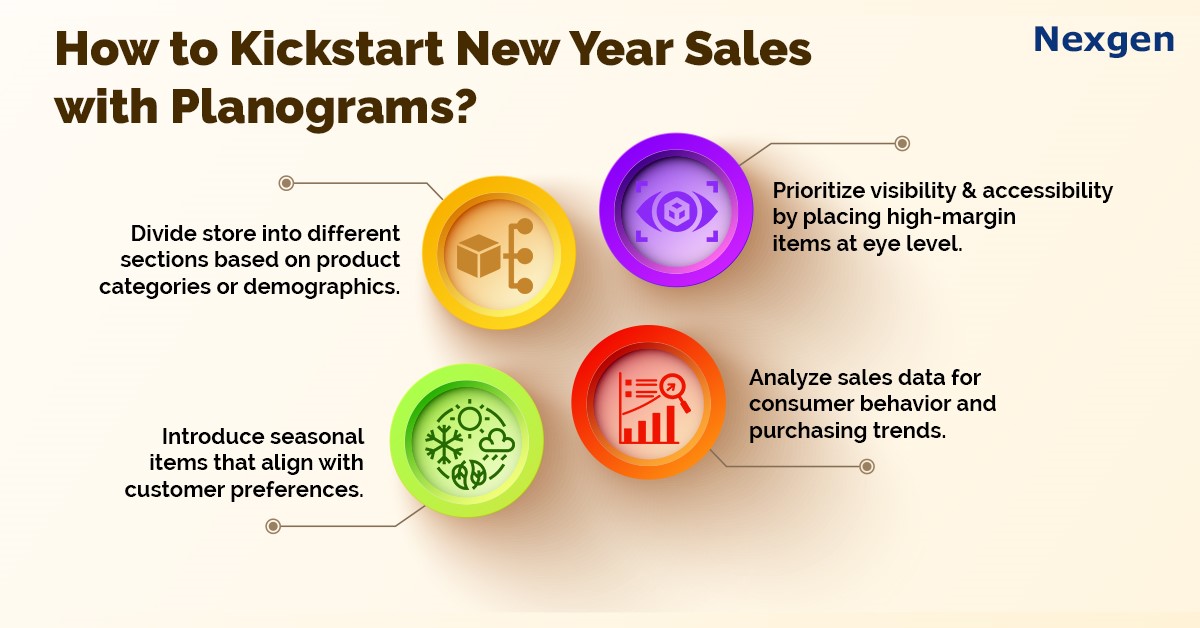As we step into a new year, retailers are presented with a fresh canvas to innovate and elevate their strategies to maximize sales and enhance customer satisfaction. One essential element that plays a pivotal role in achieving these goals is an effective planogram. A well-crafted planogram not only enhances the in-store shopping experience but also contributes significantly to boosting sales by strategically placing products for maximum visibility and appeal.
Planogram Definition & Meaning
A planogram is a visual representation of how products should be arranged on store shelves to optimize sales. It considers factors such as product placement, shelf space, and customer behavior. By carefully designing planograms, retailers can influence customer purchasing decisions, create an organized shopping environment, and increase revenue.

- Data-driven insights: Begin by analyzing sales data, customer preferences, and seasonal trends. Use this information to identify high-performing products and determine the optimal placement for each item within the store. Let us consider a fashion store, specializing in clothing and accessories. The store management has decided to implement a planogram based on data-driven insights to enhance the shopping experience and boost sales. You can start by analyzing its sales data from the previous year. You will discover that certain clothing categories, such as winter jackets and summer dresses, consistently outperform others. Additionally, accessories like scarves and sunglasses show spikes in sales during specific months. This not only enhances the shopping experience but also ensures that high-performing products are prominently featured, leading to increased sales and customer satisfaction.
- Segmentation and targeting: Divide your store into different sections based on product categories, demographics, or seasonal themes. Tailor planograms for each section to cater to the specific needs and preferences of the target audience. For example, the ‘organic section’ in grocery store caters to health-conscious customers, featuring a range of organic produce and nutritional supplements. Meanwhile, the ‘family Favorites’ zone focuses on providing convenient and affordable options, with planograms highlighting staple items and family-sized packages to meet the needs of busy households.
- Prioritize bestsellers: Highlight your best-selling products by placing them at eye level or in high traffic areas. This ensures that customers are more likely to notice and purchase these popular items. For instance, most supermarkets prioritize bestsellers by strategically placing them at eye level and in high-traffic areas. The prominently displayed shelf at eye level features the most sought-after products, ranging from popular snacks to household essentials. By positioning these bestsellers in areas with heavy foot traffic, it will capture the customer’s attention, making it convenient for them to discover and quickly grab their favorite items during their shopping journey.
- Cross-merchandise items & seasonal adjustments: Encourage customers to explore related products by strategically placing complementary items near each other. Cross-merchandising not only increases the average transaction value but also enhances the overall shopping experience. Update planograms regularly to accommodate seasonal changes and promotions. This could involve featuring holiday-themed displays, introducing limited-time offers, or adapting product placements based on seasonal demand.
- Technology integration & employee training: Leverage technology such as shelf sensors and data analytics to monitor customer behavior and track the performance of different products. This real-time data can be used to make informed adjustments to planograms for continuous improvement. Ensure your staff is well-trained to understand and implement planograms effectively. This includes regular updates on changes, seasonal adjustments, and insights into customer behavior.
Overview of Nexgen POG
Nexgen POG is a robust and user-friendly cloud-based visual merchandising tool. It is designed for quick and efficient planogramming with minimal effort. Planogram in retail can be designed by easily dragging and dropping the products. The multi-device compatibility feature of POG allows you to obtain, share and edit planogram on any device, including your phone. It helps in designing store-specific planograms for increased product visibility and sales.
Get Your Free Trial Now!